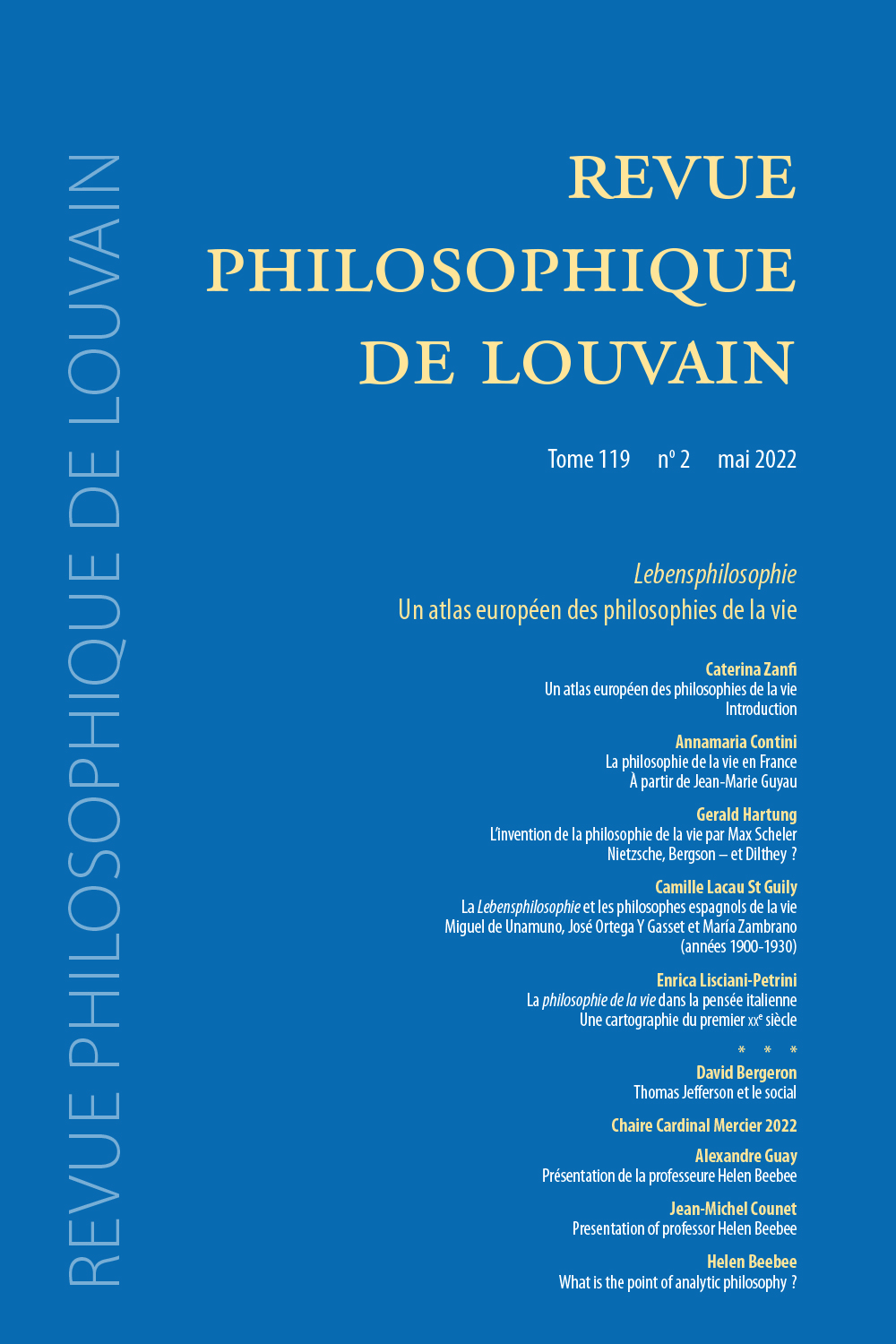 previous article in this issue previous article in this issue | next article in this issue  |

Preview first page |
Document Details : Title: L'indication originaire Subtitle: Une anticipation marxiste de l'attention partagée Author(s): BIMBENET, Étienne Journal: Revue Philosophique de Louvain Volume: 117 Issue: 3 Date: août 2019 Pages: 567-586 DOI: 10.2143/RPL.117.3.3287718 Abstract : En 1973, dans les Recherches sur l’origine du langage et de la conscience, Trần Đức Thảo situe l’origine de l’intentionnalité en tant qu’humaine dans le geste de l’indication. Ce faisant il anticipe la découverte d’un phénomène que la psychologie de l’enfant et une certaine primatologie des années 1990 et 2000 mettront au centre de leurs investigations, la Joint Attention (Attention partagée). Ainsi le même comportement se découvre au sein de deux cadres intellectuels bien distincts: l’anthropologie hégéliano-marxiste d’un côté, une philosophie de l’esprit largement cognitivisée de l’autre. Nous tentons ici la confrontation, afin de mesurer tout ce que le phénoménologue vietnamien peut apporter aujourd’hui à la notion d’attention partagée. Le naturalisme actuel a sans doute beaucoup à apprendre d’un tout autre naturalisme, d’inspiration socio-historique plutôt que cognitiviste et neurobiologique. In 1973, in Recherches sur l’origine du langage et de la conscience (Investigations into the origin of language and consciousness, 1984), Trần Đức Thảo situates the origin of intentionality as human in the gesture of pointing. In so doing he anticipates the discovery of a phenomenon which the psychology of the child and a particular primatology of the last decade of the twentieth and first decade of the twenty-first centuries were to place at the heart of their investigations, namely Joint Attention. Thus the same behaviour is found in two clearly distinct intellectual frameworks: Hegelian-Marxist anthropology, on the one hand, a broadly cognitivised philosophy of spirit, on the other. We attempt here to confront them in order to evaluate how much the Vietnamese phenomenologist can contribute today to the notion of joint attention. Contemporary naturalism no doubt has much to learn from a completely different naturalism of socio-historical rather than cognitivist and neurobiological inspiration. |
|


